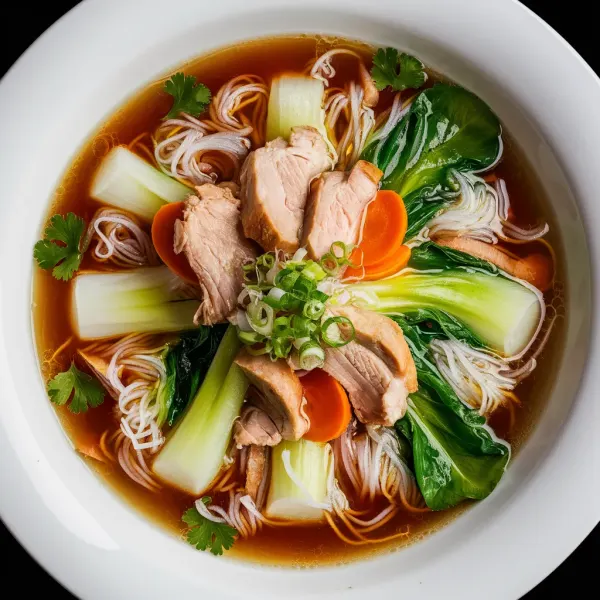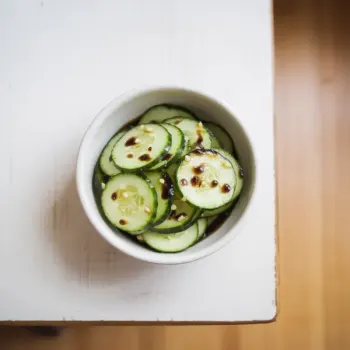
 270 minutes
270 minutesA traditional Chinese dish featuring a tender and crispy pork shoulder, flavored with a salt brine and deep-fried to perfection.


Bone-in Pork Shoulder, with skin and fat layer intact
0 lb
quarts
tablespoons
quarts
1. Rinse and Clean Pork Shoulder
First, give your pork shoulder a thorough rinse under cold water, scrubbing the skin clean. This helps remove any impurities and prepares the meat for the next steps.
2. Boil Pork Shoulder in Salt Water
In a very large pot, dissolve the salt in 3 quarts of water and bring it to a boil. Carefully add the pork shoulder to the boiling salt solution. Let the pork shoulder gently boil for about 1.5 hours, then turn it over and continue boiling for another 1.5 hours. Ensure that the water is gently bubbling throughout this process to cook the meat evenly.
3. Drain and Cool Pork Shoulder
Once the pork is tender, remove it from the pot and place it on a rack set over a bowl to drain. Allow the pork to cool to room temperature, which should take about an hour. This step is crucial as it helps the pork firm up, making it easier to handle in the next steps.
4. Pat Dry Pork Shoulder
After the pork has cooled, pat it dry thoroughly with paper towels. Removing as much moisture as possible ensures that the skin will crisp up nicely during frying.
5. Deep-Fry Pork Shoulder
In another very large pot, heat 3 quarts of peanut oil to 375ºF. Once the oil is hot, carefully lower the pork shoulder into the oil. Deep-fry the pork for about 15 minutes, then turn it over and fry for another 15 minutes. The high heat crisps the skin beautifully, and maintaining the oil temperature ensures an even fry. Look for a deep brown color on the skin as your cue that it’s ready.
6. Drain and Rest Pork Shoulder
After frying, remove the pork shoulder from the oil and let it drain in a large bowl for about 10 minutes. This allows any excess oil to drip off and the meat to rest.
7. Slice and Serve
Finally, transfer the pork shoulder to a cutting board. Slice it into portions and serve. Enjoy your beautifully crispy and tender Ningbo-style braised pork shoulder with family and friends.
Swap the pork shoulder for beef short ribs. Adjust your braising liquid by adding star anise and cinnamon to complement the beef's rich flavor. After the braise, you may want to reduce the liquid to create a more concentrated sauce.
Replace the pork with duck legs. Duck has a strong, gamey flavor that pairs well with hoisin sauce and Chinese rice wine added to the braising liquid. The skin can be crisped up in a similar fashion to the pork.
Firm tofu can be a great protein alternative. Modify the braising liquid to be slightly lighter, perhaps using white pepper and a touch of sesame oil. After braising, the tofu can be pan-fried or broiled to achieve a crispy exterior.
Use chicken thighs in place of pork. The cooking time will be shorter due to the smaller cut and the fact that poultry cooks faster. For the braising liquid, you might incorporate orange peel and five-spice powder for a different flavor profile.
Lamb shanks can be substituted for pork shoulder. Modify the braising liquid by adding honey and rosemary. Finish by glazing the lamb with a reduction of the braising liquid and broiling it briefly to crisp up the exterior.




Comments (0)